#Ngoc Duong Bamboo
Explore tagged Tumblr posts
Text
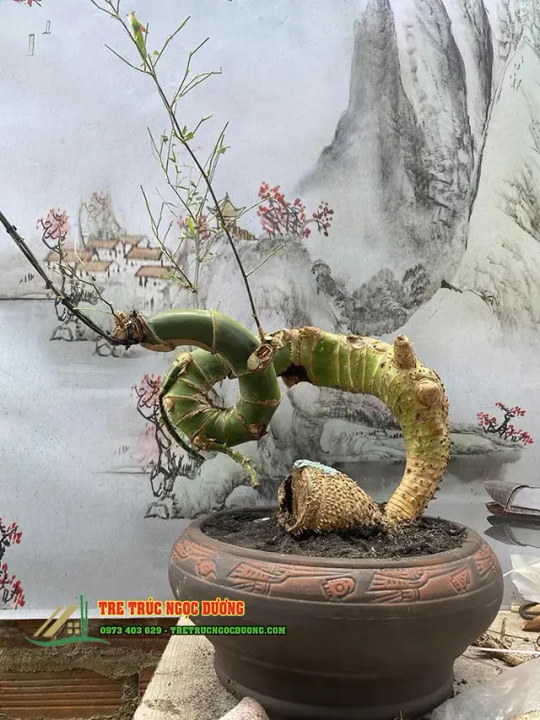
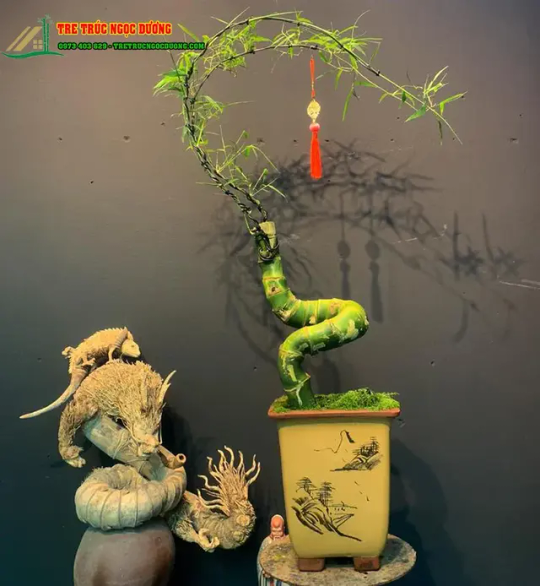
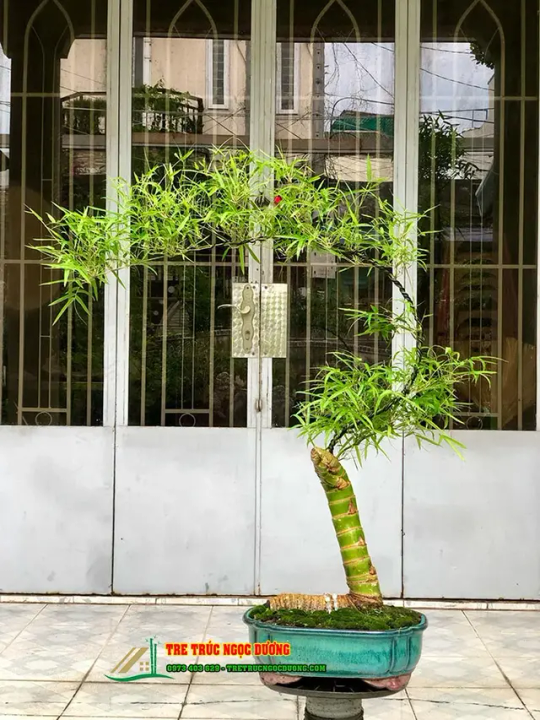
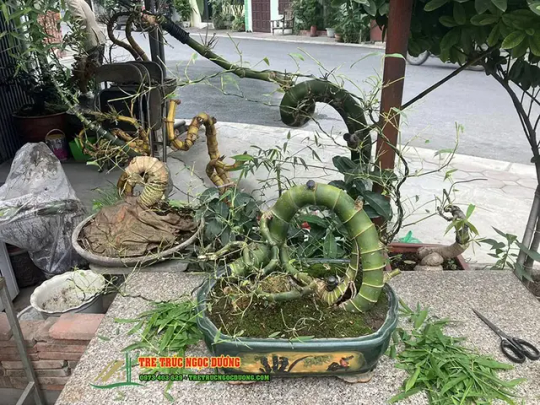
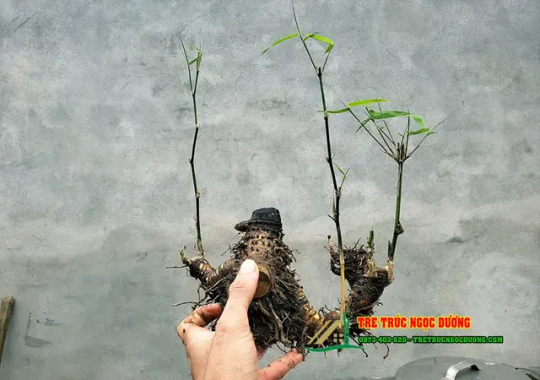
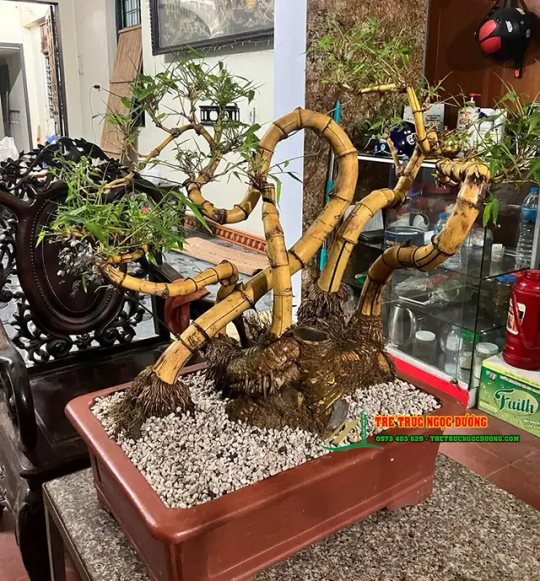

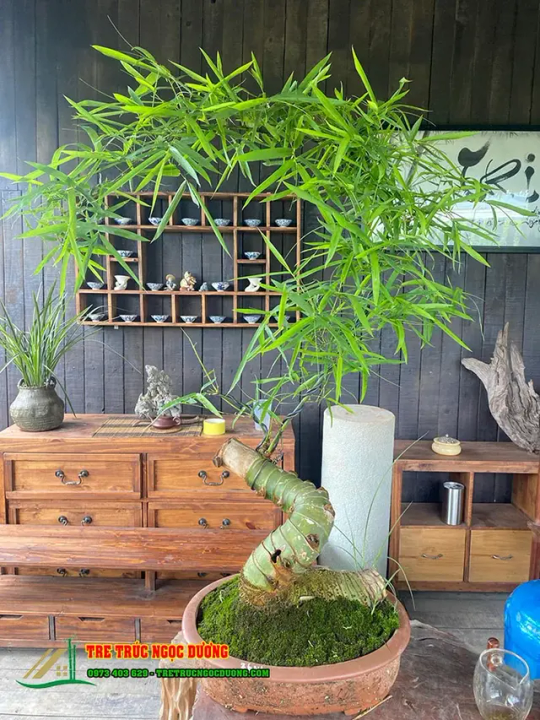
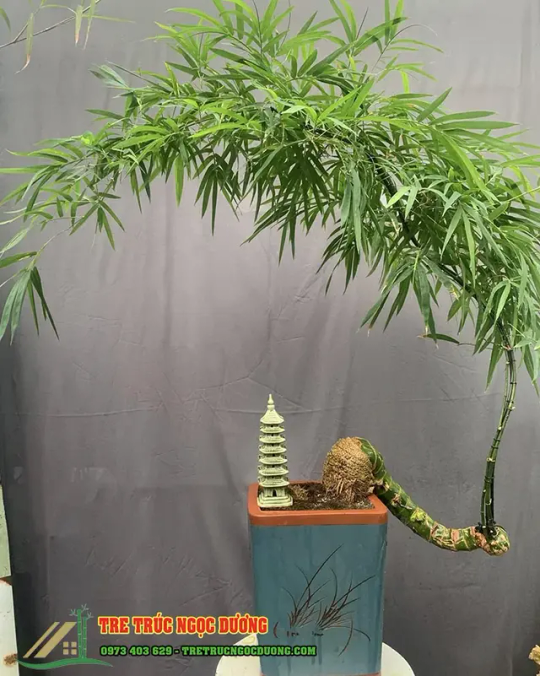
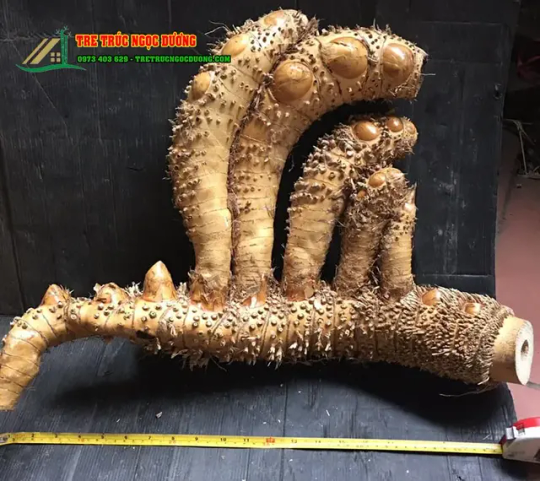
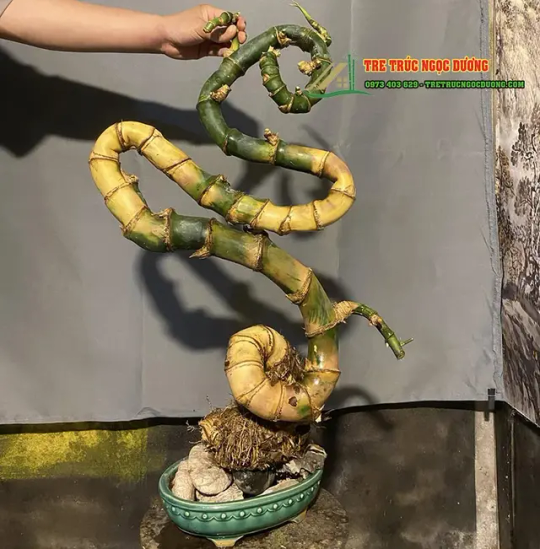

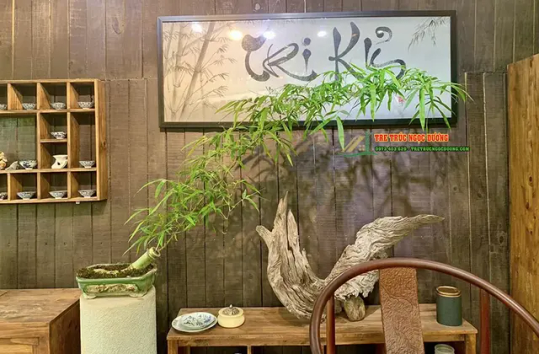

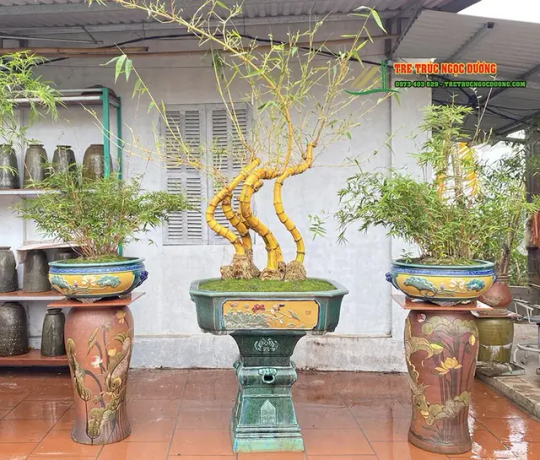
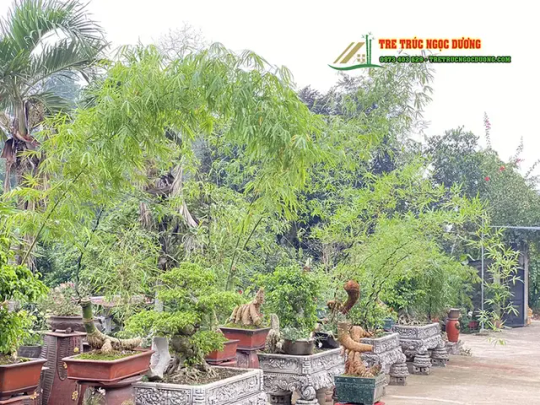
Bí Ẩn Tre Bonsai: Tuyệt Chiêu Uốn Tạo Dáng Khiến Dân Chơi Cây Phát Sốt!
Nhắc đến cây bonsai, người ta thường nghĩ ngay đến những gốc tùng, bách cổ thụ đầy uy nghi. Nhưng giữa thế giới cây cảnh rộng lớn ấy, tre bonsai lại mang một sức hút đặc biệt, vừa mạnh mẽ, thanh thoát, vừa đậm chất thiền. Tạo dáng bon sai cho cây tre không hề đơn giản, bởi tre vốn dẻo nhưng cũng rất dễ gãy nếu không biết cách xử lý đúng kỹ thuật. Chính vì thế, những cây tre bonsai với dáng thế độc đáo luôn khiến giới chơi cây mê mẩn, sẵn sàng săn lùng bằng mọi giá.
2 notes
·
View notes
Text
6 FAMOUS CRAFT VILLAGES IN HOI AN ANCIENT TOWN
One of the interesting things when traveling in Hoi An Ancient Town is the extremely famous craft villages here. We will introduce to you ‘6 FAMOUS CRAFT VILLAGES IN HOI AN ANCIENT TOWN’, check it out now!
1. Kim Bong Carpentry Village
Highlights:
Spending 10 minutes going across the Thu Bon river from Hoi An Ancient town, you can find Kim Bong Carpentry Village. For more than 600 years, Kim Bong Carpentry Village has provided quality woodwork products for the country, from royal tombs in Hue to high-rise buildings in big cities like Hanoi or Saigon. Its style is believed to be the finest combination of Japanese, Chinese, and Cham kingdom’s style.
Kim Bong village has formed 3 groups of artisans: shipbuilding, civil wooden furniture, and ancient architectural construction so it can satisfy various demands. These groups contribute to vigorous development of the village and help to maintain the traditional work and the rank of master through many years.
What to do:
Kim Bong Carpentry Village is so famous for handiworks which are available to Hoi An visitors. Visiting the village, you can find the two main streets to shop for fine woodwork to bring home. With the clever and skillful hands of artisans, they turn wood into water buffaloes, bamboo shaped carved plates, and rustic wood pig,…
You also can meet Mr Duong Ngoc Sang who is an expert in making gongs and adjusting the sound of this instrument. Considered as a “living treasure” of the village, he has a lot of things to share with the tourists.
Enjoy the fresh and peaceful atmosphere of the countryside will help to blow away your stress. And the smell of wood and paint everywhere will surely impress you a lot.
Tips:
You don’t have to pay an entrance fee to enter. It takes a 10-minute boat ride from Hoi An Ancient Town to Kim Bong village.
2. Phuoc Kieu Bronze Casting Village
Highlights:
Existing for more than 400 years, Phuoc Kieu Bronze Casting Village is one of the oldest traditional craft villages in Hoi An. First established by followers of feudal lord Nguyen Hoang, it was expanded to make weapons, and items used in royal ceremonies and government seals. Until now, the villagers still keep the fire burning in the forges and it is now famous for its bronze ceremonial artifacts and decorative items.
Currently, the village has more than 20 families with around 100 laborers. They have casted over 4000 gong sets for highland ethnic minority villages. Noticeably, the 2 artisans Duong Ngoc Dung and Duong Ngoc Truyen are two famous people in the village who completed the project of a 1.8 ton great bell in 2006. The craftsmen have made products like bells, incense burners, ancient vases, gong-like music instruments, lamp holders,…
Just 9 kilometers away from Hoi An Ancient Town, it is easily accessed by bicycle or motorbike. The village will be a great opportunity to see the spiritual life of the local people through cooking products and worship products,…
What to do:
The bronze products can be found on the road side so you can buy a bronze piece to bring home after bargaining. There are various types and the price ranges from VND 100,000 to millions of Vietnam dong.
Apart from buying souvenirs, you also can participate in the process of making bronze items to understand how careful the craftsmen are to make a product.
Another highlight and unique product of this village is gongs. The artisans will perform with gongs so you can listen to the special sound and also the soul of Phuoc Kieu Bronze Casting Village.
Tips:
You should bring a hat, face towel, and camera.
3. Xa Duong Lantern Village
Highlights:
Visiting Hoi An ancient town, you may get lost with thousands of colorful lanterns at night. Do you know where these lanterns are made? It’s Xa Duong Lantern Village where the sparkling lanterns are made by hand. It can be said that there is nowhere else that can make lanterns as good as Xa Duong village. Hoi An people consider Xa Duong as the lantern-making ancestor. In more than 400 years, its products and designs have been greatly improved and diversified. In the past they only made lanterns and unicorn basic heads. Now, the lanterns have so many shapes like diamond, sphere, tetragon, hexagon, and circular cylinder.
You can find many lanterns on the streets of Hoi An ancient town, but remember that they are made in this village. These lanterns are symbols of Hoi An which create a romantic beauty of this town.
What to do:
Buy lanterns for friends and family. Hoi An people believe that hanging lanterns will bring happiness, luck, and wealth. So they will be meaningful and awesome souvenirs and also help remind you of the trip to this ancient town and Xa Duong Lantern Village.
Join a lantern making class. The class is an amazing way to learn about the traditional craft techniques and Vietnamese culture. You will learn the process of making lanterns from choosing silk for the screen and bamboo for the frame. When completed, you can bring these unique hand-made lanterns home.
Tips:
The best time to visit Xa Duong Lantern Village is on the 14th day of each lunar month when they celebrate the monthly lantern festival. You can admire the stunning lantern view and put a lantern on the Hoai river at night.
4. Tra Que Herb Village
Highlights:
Another name to be listed in the most famous traditional villages in Hoi An is Tra Que. The name of the village means “cinnamon tea”. It was established more than 300 years ago when the villagers worked as fishermen for living. After finding out the advantages of rich fertile soil, they began to plan herbs and vegetables. So why is this vegetable so special? Its produce are freshest and cleanest thanks to using Tra Que lagoon’s seaweed manure. The farmers say no to using harsh chemicals and toxins.
The village is home to about 200 families and it is attractive with its peaceful atmosphere and lush green farming area. Although it is just a small village, it plays an important role in providing vegetables to many restaurants and households in Hoi An. The farmers use their special techniques to produce the highest quality vegetables. They do their best to earn around VND 200.000 (around USD 8.6)/ day.
There are up to 41 kinds of herbs and vegetables like water spinach, winter melon, turmeric,…grown by the villagers. For some kinds, it only takes 20 days from seeding to harvesting. Their distinct flavor is well-known and preferred by most Hoi An people.
What to do:
Join a cooking class: Tra Que has its own restaurant called Waterwheel. The owner of this restaurant is experienced and skilled in cooking. They are willing to share their local techniques and recipes. The best thing is that you can cook the freshest ingredients which have been picked up from the local farm that day.
Make rice paper. You may know the rice paper because it is used to wrap in many Vietnamese dishes, especially the spring rolls. If you don’t know how the rice paper is made, there is a workshop in the village where you can learn every step of making, from rice grinding, to boiling and stretching, to drying.
Tips:
You should try out a dinner with these dishes: “Banh xeo”, papaya salad, and three friends at an organic farm in this village.
5. Thanh Ha Pottery Village
Highlights:
Thanh Ha pottery village, which is around 2 kilometers, remains a less-known tourist attraction. To get to this traditional craft, you can get on a bus or a boat from Hoi An Ancient Town. Visiting Thanh Ha village, you can get to know its long-established history, and see how local artisans have preserved the pottery making tradition.
Thanh Ha pottery village has gained its reputation from the late 15th century when the Northern people migrated there in hope of starting a new life. The pottery craft experienced a vibrant development in the 18th century thanks to Hoi An Port’s prosperity.
The skilled craftsmen have made clay pottery products by using their traditional techniques. These techniques have been passed down from generation to generation over 6 centuries. When arriving in this village, you will be captivated to see impressive ceramic works that depict famous landscapes in the world. Though going through many ups and downs, the artisans still have great passion and keep the traditional pottery making intact.
What to do:
Visit the Thanh Ha Pottery Museum: It is a new and open air building which offers full activities for everyone in your family. Inside the two-story building, you can find a workshop, a gallery, a gift shop, the terracotta market,… Here, you can choose to enjoy an exhibition to get to know more about Hoi An’s pottery history and its poetic ambiance. You also get a chance to listen to old stories and tales about ancestors or sit down to find the soul of this land.
Wander around Terracotta Park. The park looks like other sculpture parks from the outside. But no, when you go inside, you can find a miniature display of famous architectural wonders in the world. Going around and you may recognize a few such as the Lady Liberty, the Leaning Tower of Pisa, and the Taj Mahal,…You even can touch some pieces of art and imagine how they created these artworks 50 years or even 100 years ago.
Tips:
If you go with your children, you can head downstairs to the Pottery Museum where they can try pottery making, mask painting, or other smashing activities. The children are always eager to get their hands dirty and explore every part of the museum.
6. Best Tailors In Hoi An
YALY COUTURE
YALY COUTURE is probably the best-known name if you ask for a good tailor in Hoi An Ancient Town. The shop is characterized by professionalism, an abundance of fabric available in town, and high quality. It’s a good place to have elaborate items made: apparel with sequins, ruffles, multiple layers of fabric, beadwork, and embroidery, etc. Despite being the most expensive in town, Yaly has won acclaim as the higher prices go with the higher and guaranteed quality and efficient service.
Showroom 1: 47 Nguyen Thai Hoc Street, Hoi An, Viet Nam. Tel: +84 235 2212 474. Email: [email protected]
Showroom 2: 47 Tran Phu Street, Hoi An, Viet Nam. Tel: +84 235 3861 119. Email: [email protected]
Showroom 3: 358 Nguyen Duy Hieu Street, Hoi An, Viet Nam. Tel: +84 235 3914 995. Email: [email protected]
A DONG SILK
Established in 1997, A Dong Silk is especially favored for its quality and attentive service. The secret of A Dong Silk’s success may lie in their care to customer satisfaction since most customers appraised the staff there for being very friendly and patient, as well as their knowledge of how the fabrics work with different garments and their high tailoring skill. Their wide range of fabric can also please most people. Not a cheap one but still definitely reasonable for such a high quality of clothes and service like that!
Address: 40 Le Loi, Hoi An.
Tel: (+84.510)3 910579/3 861386
Email: [email protected]
Hopefully our above suggestions will make your Hoi An day trips even better. Thank you for reading our article.
(This article is referenced from vietnamdiscovery.com & vietnamonline.com)
1 note
·
View note
Text
Responsible travel suppliers: Mekong Rustic
Responsible travel suppliers: Mekong Rustic
In Vietnam, “Responsible Tourism” is increasingly a well-received trend. This approach deals not only with tourists, but also with suppliers, who raise awareness about culture and the environment, minimize the negative impact of tourism, and create more jobs, income for local people.
One of the projects that capture this spirit is Mekong Rustic. If you want to experience the culture and immerse yourself in the poetic beauty of people and nature in the Mekong and still make a positive contribution to the trend of “Responsible Tourism”, then join with us to discover Mekong Rustic through this blog!
What is Mekong Rustic?
Mekong Rustic is a community tourism project founded by Huong Duong Tourism Management Company Limited – Represented by Mr. Nguyen Ngoc Bich in December 2014. Mekong Rustic is built on the basis of cooperation, training and Investing in Cai Be and Tan Phong islet for households including: training in tour guide skills, products, homestay accommodation, ship services, restaurants, activities and facilities equipped on Tan Phong island. Mekong Rustic does not only bring benefits to an individual or a family, but also all households participating in the project and supporting local communities and sustainable tourism in Tan Phong, Cai Be, Tien Giang.
Responsible travel
The goal of the project is to introduce to tourists the daily activities of the people of the Mekong River, support to create more livelihoods for local people, preserve traditional works, culture and develop sustainable tourism.
Tradition – Health – Responsibility
Not only does it save the tradition of activities that visitors participate in or experience responsibly locally, the activities we build here also bring health and happiness to all visitors when arriving in the Mekong Rustic.
How responsible is it?
Mekong Rustic has been committed to offering low-impact tours that benefit travelers and hosts alike. They work with local communities, businesses and individuals to develop sustainable tourism opportunities that help local economies while minimizing negative environmental and cultural impacts.
Their travel programs show our travelers how most Vietnamese actually live, far removed from tourist hot pots which dot the country and encourages all travelers to bring with them their favorite novel and donate to schools. Travelers are also highly encouraged to pen their personal thoughts inside the books. These are words of hope and form the basis of cultural exchanges between differing nations. Books could be given to our team members at registration, and the team shall consolidate them and distribute to the schools quarterly.
School children in Cai Be and Mekong Delta will benefit from this travel program. The book encourages literacy rates and hence allows the children or future leaders of the world to make informed life choices as their knowledge, imagination, and horizons broadens.
Mekong Rustic aims to make a positive impact on conservation of local life, natural and cultural heritage via its carefully chosen itineraries at various ports of calls. Travelers are able to play an important role in preserving and shaping the world’s diversity as they show the host communities how the values of learning the ethnic traditions and encourages greater understanding between differing cultures.
Travelers visit silk workshops, rice paper-making workshops, mats making workshops, and travel on local rickshaws to truly experience the local cultures. Mekong Rustic is more than a rustic holiday in the Mekong delta, it is about making informed lifestyle choices that would help preserve local dream time that would be passed down from generations to generations.
Mekong Rustic engages local guides, facilities, and services to generate greater economic benefits for the local peoples through meaningful human connections. Travelers play direct roles in building local pride and confidence, thus enhancing the local lifestyles and life chances.
Tourist activities that you can involved in Mekong Rustic experience
Homestay experience
Mekong Rustic Cai Be situated on one of the most beautiful islands on the Mekong River, Cai Be Town, Tien Giang Province. It stands beside Cai Be floating market among fruit gardens which emphasize the beautiful but seldom visited rural areas on this side of the Mekong River. An eco-rustic homestay set in a large and well-landscaped green area with good food, pure atmosphere and nice people, typical of the Mekong Delta.
Homestay services of Mekong Rustic not only are pure accommodation suppliers but also help visitors to truly explore the culture as well as the lifestyle of people in the Mekong River Delta. The hosts there will be cookers directly and travellers will be warmly welcomed by them as their relatives. For now, Mekong Rustic has two families serving homestay and cuisine.
Mekong river boat rice
Travellers can embark on a boat to admire the simple beauty of the Mekong Delta as well as observe the daily life of local people and gain authentic experiences like a local while cruising along the river.
Cycling around Tan Phong isles
Tan Phong Isles is in the middle of Vinh Long, Tien Giang and Ben Tre provinces where you can cycle on the peaceful road around the island with green trees to experience local life and meet friendly people when visiting Mekong rustic which equips over 20 bicycles.
Local cuisine experience
Visiting Mekong rustic, it will be worse if you don’t try local traditional cuisine here. Coming here and tasting local foods of Mekong specialties such as honey, elephant ear fish, rambutan, water coconut, and mango.
Gardening
Mekong Rustic garden and homestay is an ideal destination for communicating with local people and learning how to garden. Especially, you will see orchards where the host shares their experience on how to take care of the garden and pick fruits as it is their daily work.
Gardening in Mekong
Ditch fishing hook
Visiting Mekong Delta and staying at Mekong rustic, travelers have chances to manually bailing water out of ditches to catch fish and then cooking them right away. Travellers can wear Mekong River Delta people’s folk costumes and join this exciting activity with local tour guides. Mekong Rustic also provides boots and protective clothes to keep them safe.
Jackfruit leaf cake
Jackfruit leaf cake is a signature dish of Western Vietnam originating from the countryside during wars. When enjoying, you need to separate the cake from the jackfruit leaves before putting it on a plate and filling it with coconut milk and peanuts. The sweet taste of coconut milk with the chewy taste of the cake will surely make you satisfied. Visiting Mekong rustic, you can make this local staple by yourself and bring it back as a gift for relatives.
Shop at the local farmers’ market
Each boat has one bamboo stick on the front which used to hang the product of the boat. This is a kind of advertising to show what the boat sells inside. Local people produce the farming products in the farm or in the garden and then they load them to the floating market. Some people come here to buy the products from the merchants and bring back to the markets in the mainland for selling to the customers.
Shop at the local farmers’ market
Đơn ca tài tử Folksong
Before ending an eventful day, travellers can take a rest and enjoy the great Don Ca Tai Tu Folksong – one of UNESCO’s recognized intangible cultural heritage as well as listen to the intriguing stories of local people.
Rowing boat on canals. The Mekong people’s lifestyle is associated with the river. Mekong Rustic has been building the most appropriate, primitive rowing boat trip on Tan Phong Isles for tourists.
Fishing on river
Fishing on the river is also one of the daily activities of local people. However, it has gradually vanished by getting rid of a large amount of fish before. Mekong Rustic holds fishing activities on the river with local people in Mekong Delta helping to display fishing scenery for visitors to experience one small part of the workers’ lifestyle.
Local traditional handicraft
Doing the handicraft products under the guidance of local hosts and exploring traditional handicraft.
By joining these above activities, you not only will be immersed deeply in the culture, explore the real life of local people in the Mekong area but also contribute to their income, protecting traditional works, and developing sustainable tourism.
Writers: Minh Hien and Nguyen Dieu Linh
Source: https://blog.evivatour.com/responsible-travel-suppliers-mekong-rustic/
1 note
·
View note
Text
H&P Architects designs white corrugated-metal house in Hai Duong
Vietnamese studio H&P Architects has completed a corrugated metal-clad house in the An Lai hamlet in Hai Duong, Vietnam, which features an open-plan interior and playful net floors.
The two-storey house, named HOUSE by the studio, was built for a new family on a plot of land opposite an existing building. To keep it as self-sufficient as possible, H&P Architects added solar panels on the roof.
Top image: the two-storey house is built around a steel frame. Above: white corrugated metal clads the building
These can produce twice as much electricity as necessary for a conventional household, according to the studio, and residual electricity can be stored or traded.
A rainwater tank provides water for the house, while filtered water from its septic tank is used for watering the garden.
The 75-square-metre building was constructed from a reinforced-steel frame made from pillars and beams that form a pitched roof and are visible in the interior. It was clad in an envelope of bricks and hardwearing, corrugated white metal.
The house is located next to a garden and the family home
The house was commissioned by a family where the son is getting married and is located next to the family home.
"The husband works for Mao Khe Coal company in Quang Ninh province and his wife does farming work and also is a mason coolie after harvest time," H&P Architects founder Doan Thanh Ha told Dezeen.
"They decide to have this house built for their son because the one they are living in is too small."
Brick and metal were combined to create the exterior of the house
Inside the house, the architect designed open-plan spaces and left the brick walls bare.
The interior was created based on the needs of the family and features a playful, open net-floor that allows air to move through the house and complements the gridded sides of the staircase.
Steel, wood and bamboo were used for the interior
"I decided to use steel, wood and bamboo for the interior as they are popular materials in rural areas in Vietnam," Thanh Ha said.
"Void space play an important role in small houses and can be filled when needed to increase the usable area."
"The nets inside present a solution that fits these two states – open and closed – bringing about fresh experiences to the house."
Net floors open up the space
The residence is a part of H&P Architecture's HOUSE project, which stands for "Human's Optional USE" and sees the studio design the frame of a house and then adapt it to its surroundings.
"As Human's Optional USE is made of three components – frame, covering, furnishing – it can be used flexibly in areas of different climate patterns according to its owner’s need," Thanh Ha said.
Bare brick walls give the interior a warm feel
The buildings can be adapted for vulnerable areas, such as areas prone to flooding, and be built on steep ground.
"The frame allows lifting the foundation pillars to form a house-on-stilts for mountainous terrain, or spreading the foundation into a floating house supported by many barrels beneath over water," Thanh Ha said.
Two-storey houses could help save resources, the architect said
Building these kinds of houses en masse could help save resources in Vietnam, he argued. "In order to save land and water area, the houses I have made have at least two storeys," he said.
"If houses in Vietnamese rural areas – about 70 per cent of the population – are made in this fashion, Vietnam can save a lot of natural resources, thus promoting more sustainable development."
The studio is working on new versions of the building with the same structure
The studio previously created the AgriNesture house in Mao Khe in the same way, but that version was adapted to have a plantable roof.
"Human’s Optional USE is the continuation of that way of thinking," Thanh Ha said. "At the moment, I am working on another house in Ninh Binh but with different materials. I hope to spread more of this fashion in the future."
H&P Architects previously also wrapped brick walls around the Brick Cave house in Hanoi, which was designed to make the residents feel close to nature.
Photography is by Le Minh Hoang.
Project credits:
Architect: H&P Architects Team: Doan Thanh Ha ,Tran Ngoc Phuong, Han Minh Tu, Nguyen Hai Hue, Tran Van Duong, Luong Thi Ngoc Lan
The post H&P Architects designs white corrugated-metal house in Hai Duong appeared first on Dezeen.
0 notes
Text
Nord -Ouest Vietnam authentique 12 jours( Visite du marché de l’amour Moc Chau)
Ce circuit vous emmènera dans le Nord-ouest du Vietnam, qui compte incontestablement parmi les plus belles régions d'Asie. Le dépaysement y est total : larges cuvettes d'un vert tendre, villages de chaume perdus dans un décor de rizières en terrasse, défilés vertigineux.

Nord -Ouest Vietnam
Voilà le véritable trésor de ces montagnes : le sourire de ses habitants ! Une mosaïque d'ethnies, un tourbillon de costumes et de cultures bien vivantes. Un vrai marché de l’amour coloré vous permets d’imaginer une image comme dans la vie de rêve
Jour 1 : Hanoi arrivée
Arrivée à l’aéroport de Hanoi. Accueil par le guide d'Agenda tour et transfert à l’hôtel. Reste libre pour vous reposer ou faire une première découverte de la ville et les vieux quartiers de Hanoi . Puis la balade d'une heure en cyclo-pousse dans le quartier des 36 corporations, le vieux quartier historique vous permet de comprendre mieux la vie des gens locaux.
Note : La demande de l’autorisation préalable pour visa à l’arrivée est gratuite !
Note: La disponibilité de la chambre est vers midi.
Jour 2: Hanoi visite
Après le petit déjeuner, vous visitez la ville de Hanoi qui est commencé par la visite du Mausolée de Ho Chi Minh (Fermé le lundi, le vendredi et en Novembre), de la pagode Tran Quoc et du temple Quan Thanh. Puis vous continuez la visite au Temple de la Littérature qui était la première université du Vietnam. Dans l’après- midi, après la visite du musée d’ethnologie et du lac Hoan Kiem avec le temple Ngoc Son, une petite marche dans les rues des anciens quartiers vous permet de rencontrer des gens locaux et de faire du shopping dans les anciens quartiers..Ce soir vous admirez le spectacle des marionnettes sur l’eau.
Diner et nuit à Hanoi..
Jour 3: Hanoi – Mai Chau
Départ pour le voyage de 4 heures (150 km) de route pour Mai Chau. Sur le chemin, faire des arrêts de temps en temps pour des belles photos de superbes paysages des montagnes du Nord Ouest du Viet Nam. Après le déjeuner, belle promenade dans le village ethnique à Mai Chau, une des plus belles vallées du Nord Vietnam où habitent les ethnies minoritaires Thai avec leurs maisons en bois sur pilotis qui sont bordées par des rizières verdures, des petits étangs. Découverte des us et coutume tradionnels originaux des Thai blancs en passant la nuit dans leur maison sur pilotis où vous pourrez assister le spectacle de musique traditionnelle presentée par les jeunes filles Thai, et goutez de l’alcool à base de riz gluant fermenté dans les jarred et à boire avec des tuyaux en bamboo
Nuit chez l’habitant ( maison sur pilitis)
Jour 4: Mai Chau – Moc Chau
Petit déjeuner chez l’habitant,
Aujourd’hui vous allez parcourir la même distance que pour aller à Mai Chau. La route de Son La est bordée de vergers, plantations de thé, majestueuses montagnes et la chance de rencontrer et parler avec les groupes ethniques des Thai noir et Thai blanc, Hmong et Muong des tribus montagnards.
À l’arrivée à Moc Chau, Une promenade à voir le panorama du marché du demain et une petite balade extraordinaire sur les jolies colines de Thé ou vous trouvrez les jeuns minoritaires qui arrivent des differents regions pour le jour du marché à demain
Nuit à Hotel
Jour 5: la journée au Marché de l’amour des H’mong à Moc Chau – Son la
Il faut savoir que le marché de l’amour des h’mong de Moc Chau est le plus grande au Vietnam. Les H'mongs viennent de partout, de Chine, du Laos, de Thaïlande, pour y participer. Et pourtant, il est très peu connu des touristes étrangers..
le principe est que les jeunes garçons (entre 16 et 25 ans) célibataires se baladent en groupes, parés de leurs plus beaux habits et ils repèrent les jeunes filles à marier. Les filles sont elles aussi parées de leurs tenues de fête et sont âgées de 14 à 20 ans en général. Lorsqu'un garçon souhaite épouser une fille, lui et un ou deux de ses amis vont attraper la jeune fille en question, ils doivent se débrouiller pour l'emmener dans la forêt. Personne ne nous a vraiment dit ce qu'il se passait une fois dans la forêt... Mais on sait que le garçon doit réussir à garder la jeune fille avec lui, à priori trois jours, afin d'avoir le droit de l'épouser. Ensuite, s'il a réussi, il l'emmène au village et ils vivent ensembles pendant 1 mois, "à l'essai". Si au bout d'un mois, le mariage ne fonctionne pas, la jeune fille retourne chez elle et le garçon doit dédommager la famille en donnant une ou deux têtes de bétail. Si cela fonctionne, le mariage est officialisé.
En fin de la journée, nous prenons la route pour la petite ville de Son la.
Nuit à hotel à Son La
Jour 6: Son La – Dien Bien Phu visite
Petit déjeuner à l’hôtel,
Plus vous avancez sur la route, les paysages montagneux deviennent plus impressionnants, annonçant une autre grande journée à vivre. Vous allez pouvoir visiter de petits villages et rencontrer la population locale tout au long de cette journée, sur la route de Dien Bien Phu. Après un arrêt déjeuner dans Tuan Giao, vous continuez sur Dien Bien. Préparez vous à être renversé par le paysage stupéfiant du col de Pha Din. Après midi à Dien Bien Phu, la dernière base du Pouvoir français en Indochine. Ici vous allez visiter monuments, musée, les reliques de guerre et les bunkers préservés, tout est là pour raconter l’histoire de la dernière et victorieuse bataille de la Libération de 1954. Temps libre en soirée pour goûter à la vie nocturne de cette lointaine cité montagnarde.
Nuit à l’hôtel à Dien Bien Phu.
Jour 7: Dien Bien Phu – Lai Chau – Tam Duong
Petit déjeuner à l’hôtel,
Avec environ 6, 7 heures de route de montagne, votre voyage est rude et fatigant. La route traversant la vallée de Lai Chau est à la fois époustouflante et accidentée, bordée de rizières cultivées en terrasse à flancs de montagnes et de turbulentes rivières. En ce jour, vous aurez une chance de voir les plus beaux tribus montagnards du Nord Vietnam, les Hmong, Thai noirs, Dao noirs, et les Pazi.
Nuit dans l’hote à Tam Duong.
Jour 8: Tam Duong – Sapa
Petit déjeuner à l’hôtel
Le matin, vous pouvez vous promener dans cette ville paisible et visiter son marché local, avant de reprendre la route. Au fur et à mesure de la montée, vous allez atteindre le col de Tram Ton, le plus haut du Vietnam. Vous allez être récompensés par de magnifiques vues de cette chaîne de montagnes du Nord, les plus élevés de toute l’Asie du Sud Est. Vous connaîtrez alors un changement climatique spectaculaire dès que vous approchez de la ville de Sapa – une ancienne station d’altitude fondée par les français et un carrefour commercial pour les groupes minoritaires régionaux. La ville, bordée de pics imposants est souvent sous une couche de nuages. L’air est frais, mordant et rafraîchissant. Après avoir pris votre chambre tout confort à l’hôtel, vous aurez du temps libre pour explorer et apprécier l’ambiance de cette fameuse petite ville.
Nuit à hotel à Sapa
Jour 9: Sapa visite des villages ethniques – train de nuit pour Hanoi
Petit déjeuner.
Le matin, balade vers la valée Muong Hoa pour visiter les villages de Cat Cat et Sinchai, peuplés des H’mong noirs. Découvrir la vie des habitants de différentes cultures.
Visites des villages de Lao Chai et Tavan où vivent des communautés des H'mongs noirs, des Daos rouges, et des Giays.
Transfert à la gare de Laocai en fin d’après-midi.
Train de nuit pour le retour à Hanoi en cabine confortable.
Jour 10: Hanoi arrivée – Kenh Ga – Tam Coc ( Baie Halong terrestre)
Arrivée à Hanoi de bonne heure. Une Douche et petit déjeuner et suite départ pour Kenh Ga (canal du poulet)dans la province de Ninh Binh. A l’arrivée à Kenh Ga, vous embarquez pour une excursion en bateau vers le village flottant de Kenh Ga situé au milieu d’une vaste région inondée durant toute l’année. Les visiteurs sont séduits par le cadre paisible du paysage ainsi que par l’authenticité de la vie isolée des habitants locaux.
Continuation de la route pour Tam Coc. A l’arrivée, vous embarquerez en petit sampan à rames pour découvrir Tam Coc, un ensemble de pitons calcaires plantés au milieu des rizières qui porte aussi le nom de « Baie d’Along Terrestre ».
Si vous avez encore du temps, vous faites un tour de char à buffle au tour du village pour la découverte de la vie authentique des gens locaux.

Nuit en ville de Ninh Binh.
Jour 11: Tam Coc – Hanong croisiere
Départ pour la baie d'Halong - huitième merveille du monde avec près de 3000 pain sucre calcaires étendus sur une superficie de 1500 km2, en passant par les provinces de Nam Dinh – Thai Binh- Hai Phong (Delta du fleuve Rouge- un des deux grands greniers de Riz du Vietnam). La légende raconte qu'un dragon y est descendu, se désaltérant, et trouvant l'endroit magnifique, il n'en est plus reparti. Depuis, elle porte le nom de « baie où se posa leDragon » (Ha Long). Arrivée à l'embarcadère de Halong, embarquement sur la jonque regroupée pour une croisiere dans la baie à travers îlots exotiques multiformes qui sont naturellement formés par le procédé d'érosion de l’air et de l'eau et le village des pêcheurs. Boisson de bienvenue. Déjeuner à bord avec des fruits de mer.
Nord -Ouest Vietnam
Après-midi: visite du village de pêche de Cua Van et de la grotte Sung Sot (Grotte de la Surprise). On jettera l’ancre dans un coin de la baie pour la nuit. Vous faites de la natation ou vous détentez en regardant le coucher du soleil en baie.
Dîner à bord. En soirée: vous pourriez faire la pêche.
Nuit à bord de la jonque.
Jour 12: Halong –Hanoi – Depart
Vous commencez la jounée par unepetit déjeuner léger avec biscuits, thé, café… Continuation de la croisière dans la baie d’Halong. Arrêt soit à l’ile Titop soit à l’ile Sim Soi. Escalade avec des marches jusqu’à son sommet pour avoir une belle vue panoramique sur la baie. Une bonne occasion pour avoir de belles photos de la baie d’Halong… Brunch à bord en retournant à l’embarcadère de Halong. Debarquement. Retour à Hanoi.
Transfert à l’aéroport pour le vol à destination à votre besoins.
N'hésitez pas à nous contacter si vous avez la moindre question
AGENDA TOUR VIETNAM
Adresse: 9ème étage, Building 169 Rue Nguyen Ngoc Vu, Trung Hoa, Cau Giay, Hanoi, Vietnam
Tel: 00 84 43 78 34 719, Hotline 00 84 914257602 ( Mr Cuong)
Email: [email protected] – Website: www.agendatour.com
0 notes
Text
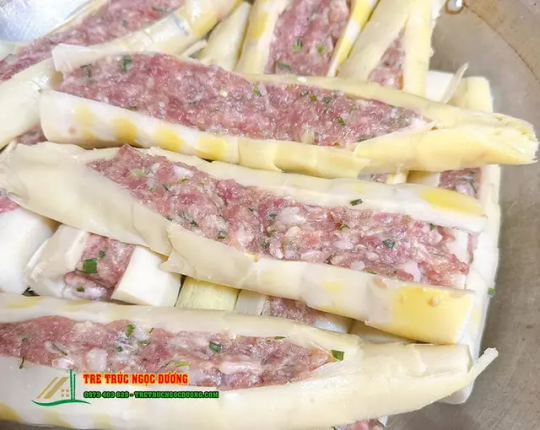
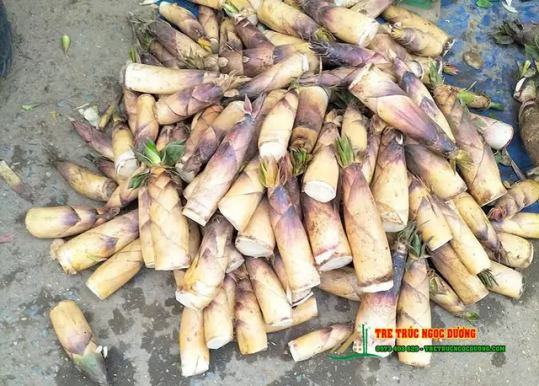
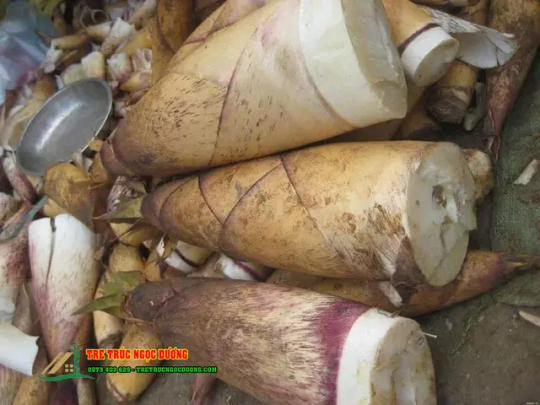

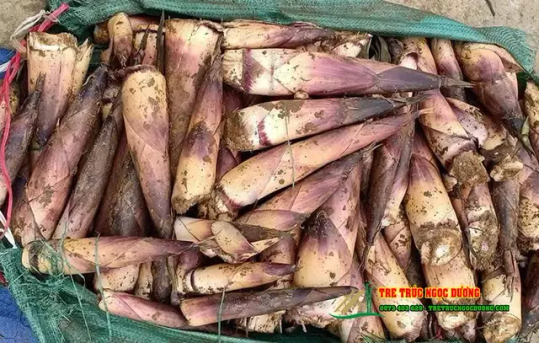


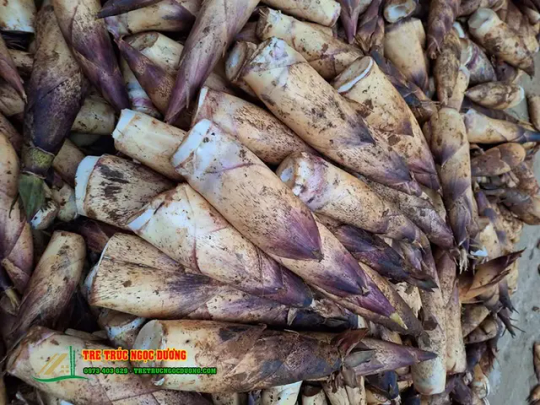
Cây Măng Vầu Là Gì? Cách Nhận Biết Loại Ngọt – Loại Đắng Và Giá Trị Sạch Từ Rừng Già
Giữa bạt ngàn rừng núi Tây Bắc, nơi sương mù phủ kín lối mòn và thiên nhiên vẫn giữ được nét hoang sơ nguyên bản, có một loài cây mọc lặng lẽ nhưng lại cất giấu trong lòng mình một món quà đặc biệt – Cây măng vầu. Người bản địa gọi đó là “vàng của núi rừng”, bởi chỉ trong một khoảng thời gian ngắn trong năm, măng mới trồi lên từ lòng đất, mang theo hương vị đặc trưng không thể lẫn với bất kỳ loại măng nào khác.
0 notes
Text

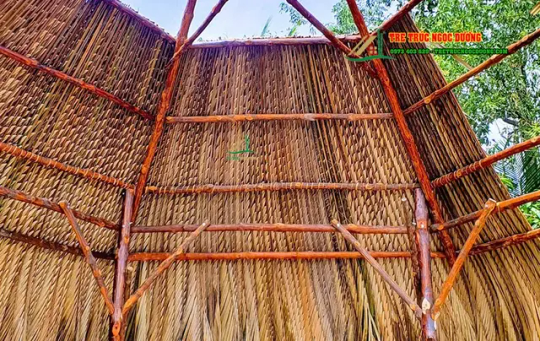


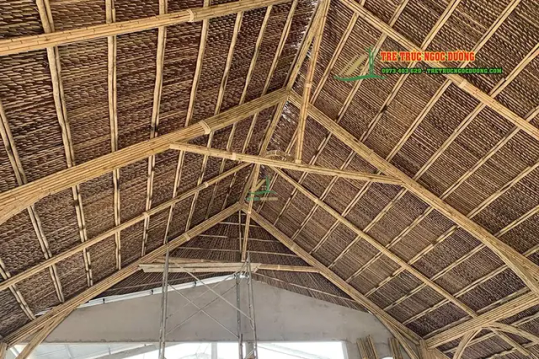
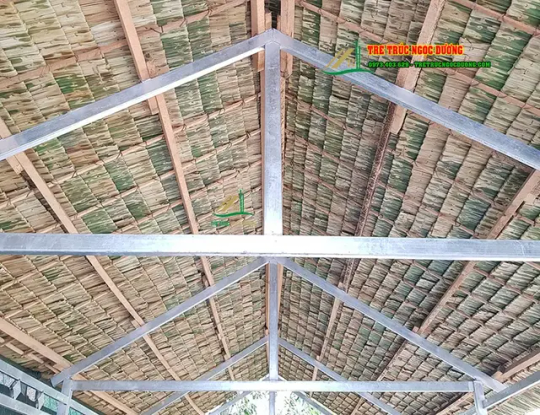
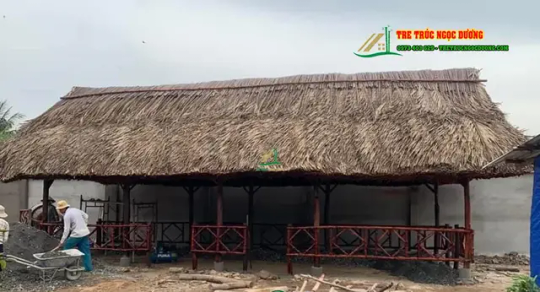
Cung Cấp Lá Dừa Nước Lợp Nhà – Giải Pháp Chống Nóng Hiệu Quả, Bền Đẹp Và Tiết Kiệm
Trong những công trình kiến trúc xanh, lá dừa nước lợp nhà mang đến vẻ đẹp mộc mạc, gần gũi với thiên nhiên và giải pháp chống nóng hiệu quả. Với đặc tính cách nhiệt vượt trội, mái lá dừa nước giúp không gian luôn mát mẻ, đồng thời giảm thiểu chi phí làm mát vào mùa hè. Đặc biệt, với độ bền cao và khả năng chịu được thời tiết khắc nghiệt, loại vật liệu này ngày càng được ưa chuộng trong các công trình như homestay, resort, quán cà phê phong cách miền quê và nhà ở sinh thái.
0 notes
Text


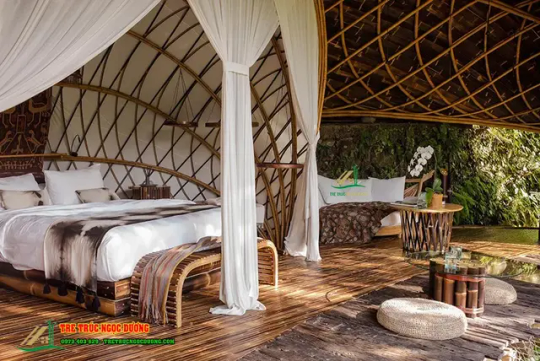
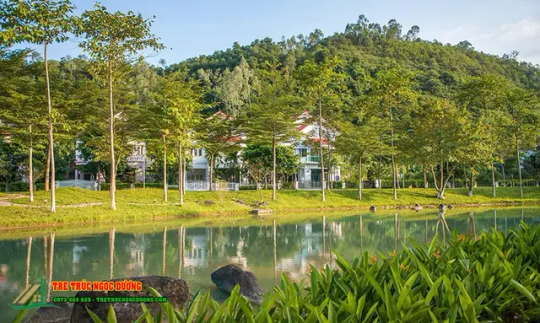
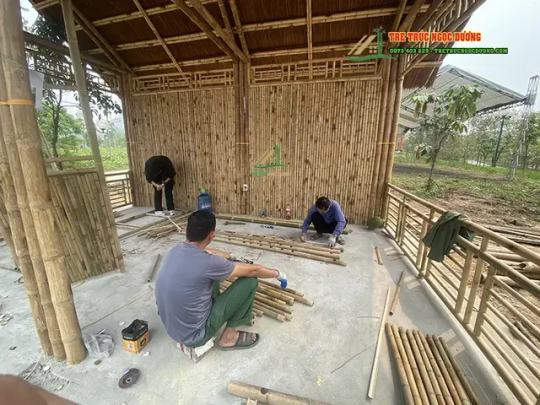


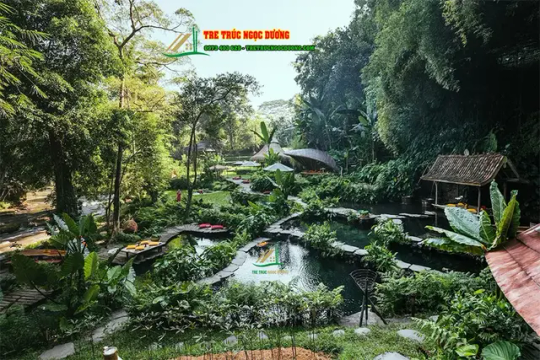
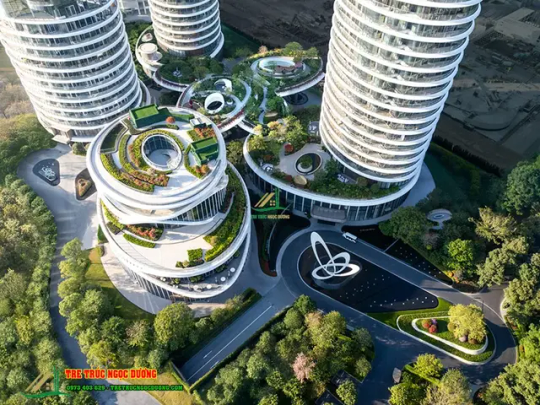
Thiết Kế Xây Dựng 2025 – Kiến Trúc Xanh Lên Ngôi, Xu Hướng Không Thể Bỏ Lỡ
Khi thế giới bước vào năm 2025, ngành thiết kế xây dựng đang chứng kiến một cuộc chuyển mình mạnh mẽ. Kiến trúc xanh không còn là lựa chọn mang tính cá nhân hay xu hướng nhất thời, mà đã trở thành hướng đi tất yếu, được ứng dụng rộng rãi trong mọi công trình – từ nhà ở, biệt thự, khách sạn đến các khu nghỉ dưỡng và dự án thương mại quy mô lớn.
#thiết kế xây dựng#kiến trúc xanh#không gian xanh#nhà tre mái lá#đô thị xanh#tre trúc ngọc dương#ngoc duong bamboo#green house#bamboohouse
0 notes
Text

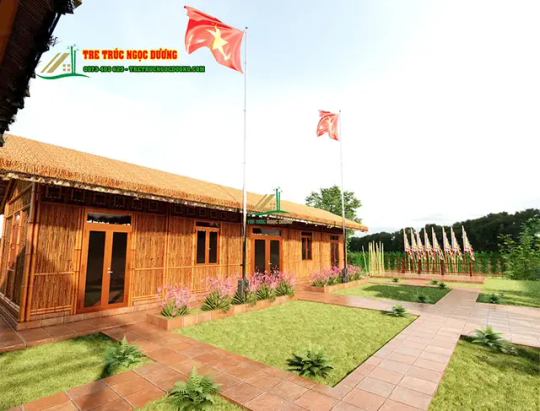
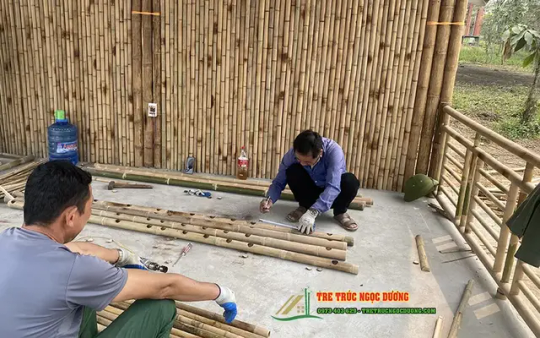

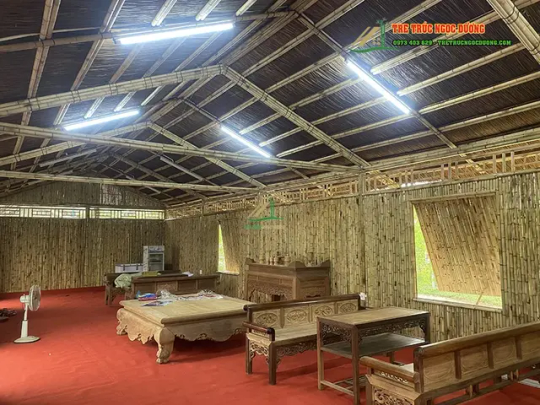
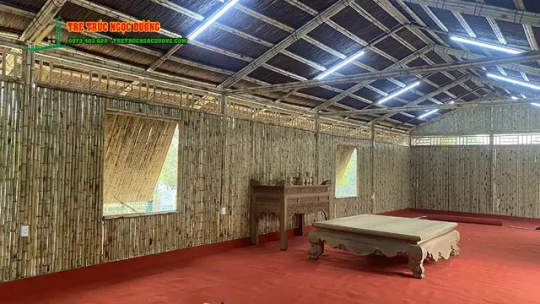

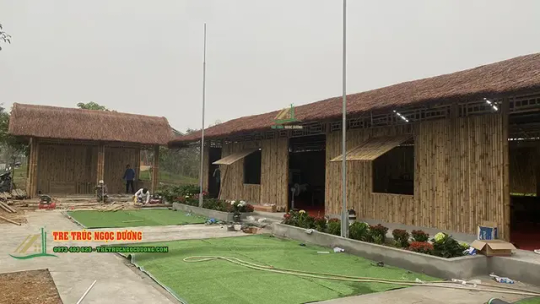

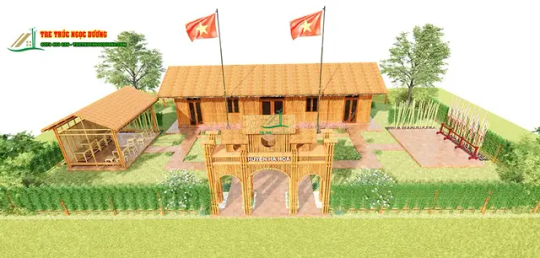
Thi Công Nhà Tranh Đẹp – Công Trình Kiến Trúc Nhà Tranh Mái Lá Đầy Ấn Tượng Đón Ngày Giỗ Tổ Hùng Vương
Khi nhắc đến nhà tranh đẹp, hình ảnh những ngôi nhà mái lá truyền thống mộc mạc, gợi nhớ về làng quê Việt Nam xưa luôn mang đến một cảm giác bình yên, gần gũi. Giữa xu hướng phát triển đô thị hiện đại, những công trình kiến trúc nhà tranh vẫn giữ nguyên giá trị văn hóa và trở thành điểm nhấn độc đáo trong không gian sống, khu du lịch, hay các sự kiện văn hóa quan trọng.
Trong không khí hân hoan chào đón ngày Giỗ Tổ Hùng Vương 10-3 âm lịch, một công trình nhà tranh mái lá đặc biệt đang được Tre Trúc Ngọc Dương thi công và hoàn thiện để phục vụ du khách đến tham quan và trải nghiệm không gian văn hóa dân gian. Dự án mang đậm nét truyền thống với kiến trúc nhà tranh xưa, được thi công tỉ mỉ, đảm bảo chất lượng cao với vật liệu tre trúc tự nhiên, thân thiện với môi trường.
#nhà tranh#nhà tranh đẹp#làm nhà tranh#nhà tranh mái lá#nhà tre mái lá#tre trúc ngọc dương#ngoc duong bamboo
0 notes
Text
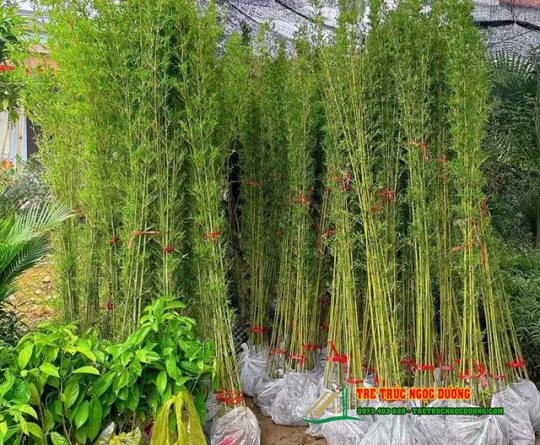
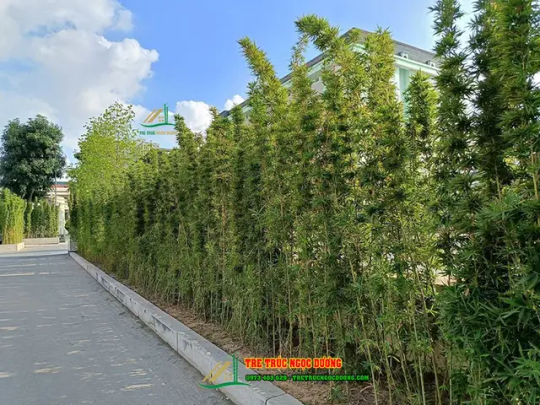
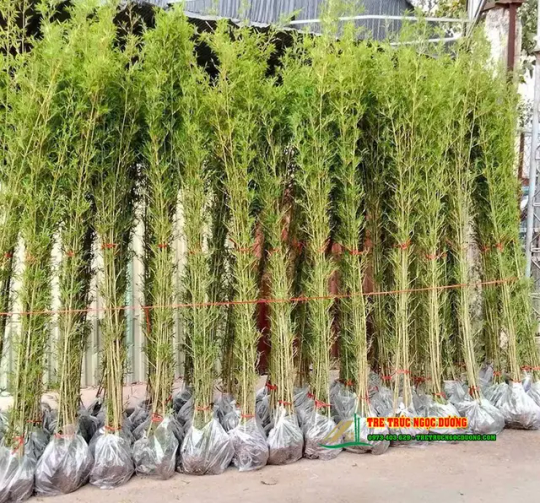

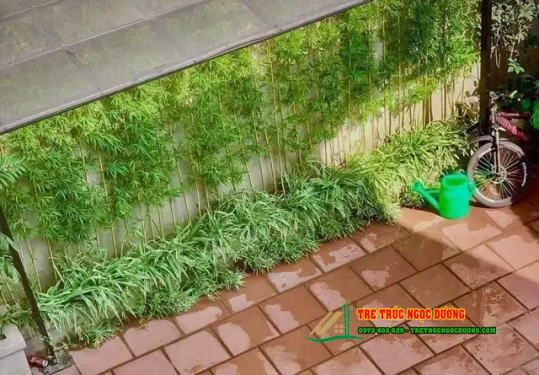
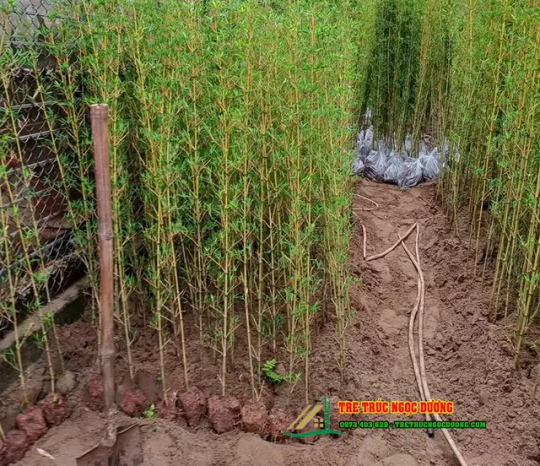
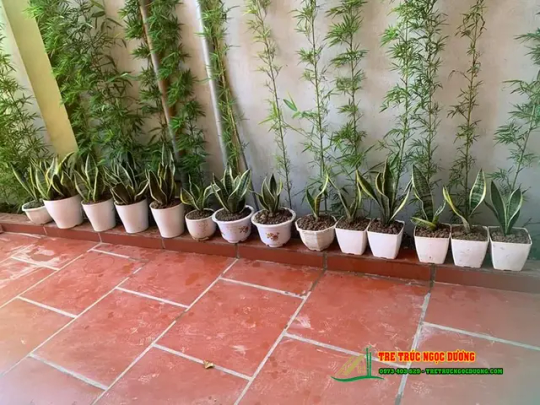


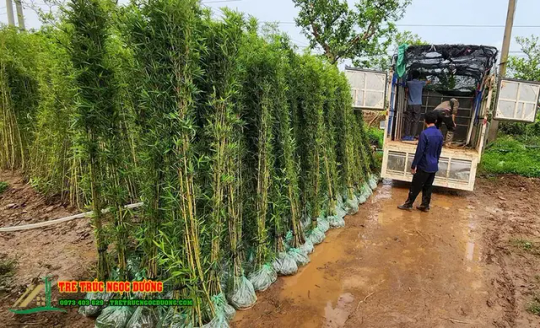
Cây Trúc Quân Tử – ‘Vị Vua’ Của Kiến Trúc Xanh Hiện Đại Và Phong Thủy May Mắn
Trong thế giới cây cảnh và kiến trúc xanh, cây trúc quân tử luôn được xem là lựa chọn hàng đầu nhờ vẻ đẹp thanh thoát, sức sống mãnh liệt và ý nghĩa phong thủy sâu sắc. Loài cây này được ví như “Vị Vua” của không gian xanh, mang lại sự hài hòa, may mắn và thịnh vượng.
#cây trúc quân tử#trúc quân tử#cây trúc kiểng#trúc quân tử làm hàng rào#hàng rào trúc quân tử#tre trúc ngọc dương#ngoc duong bamboo
0 notes
Text
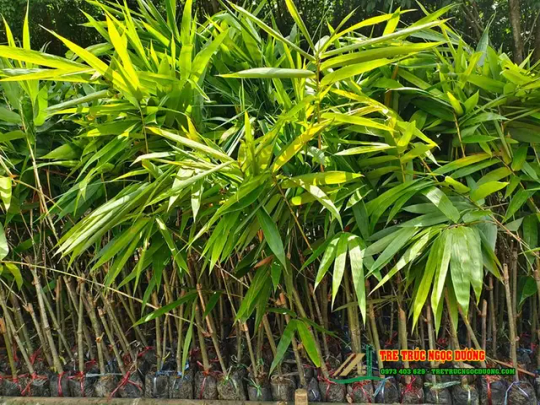


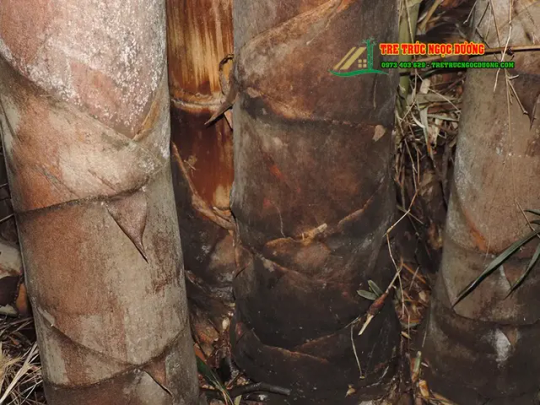





Giải Mã Tre Khổng Lồ Thái Lan – Loại Tre Siêu To Gây Sốt Trong Kiến Trúc Xanh
Bạn đang tìm kiếm một loại cây vừa độc đáo, vừa mang lại giá trị kinh tế và thân thiện với môi trường? Hãy cùng Tre trúc Ngọc Dương khám phá tre khổng lồ Thái Lan – "người khổng lồ xanh" đang gây sốt trong làng kiến trúc bền vững! Với kích thước siêu to khổng lồ, tốc độ sinh trưởng thần tốc và khả năng ứng dụng đa dạng, loại tre này là biểu tượng của sức sống mãnh liệt và giải pháp vàng cho xu hướng kiến trúc xanh hiện đại.
0 notes
Text
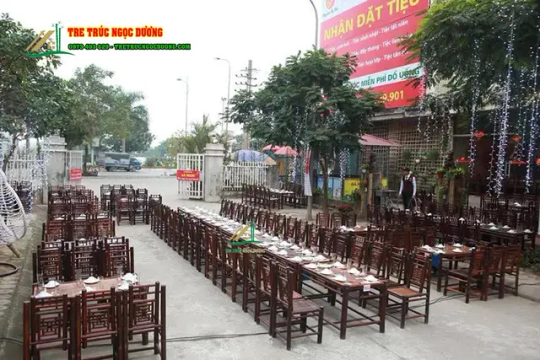


Bí Quyết Tự Làm Bàn Ghế Mây Tre Ngoài Trời Đẹp Mắt Và Siêu Bền
Trong không gian sân vườn, ban công hay quán cà phê ngoài trời, những bộ bàn ghế mây tre ngoài trời tạo điểm nhấn tự nhiên, mang lại sự thoải mái và gần gũi. Tuy nhiên, để có một bộ bàn ghế mây tre đẹp và bền theo thời gian, bạn không thể làm qua loa mà cần có bí quyết đúng cách. Bạn muốn tự tay tạo nên bộ bàn ghế mây tre độc đáo, phù hợp với không gian của mình? Bạn lo lắng về độ bền khi sử dụng ngoài trời? Đừng lo! Bài viết này sẽ hướng dẫn bạn từng bước để làm bàn ghế mây tre vừa đẹp mắt, vừa bền bỉ trước mọi điều kiện thời tiết. Hãy cùng Tre trúc Ngọc Dương khám phá ngay!
#bàn ghế tre#bàn ghế tre ngoài trời#bàn ghế tre giá rẻ#bàn ghế bằng tre#tre trúc ngọc dương#ngoc duong bamboo
0 notes
Text
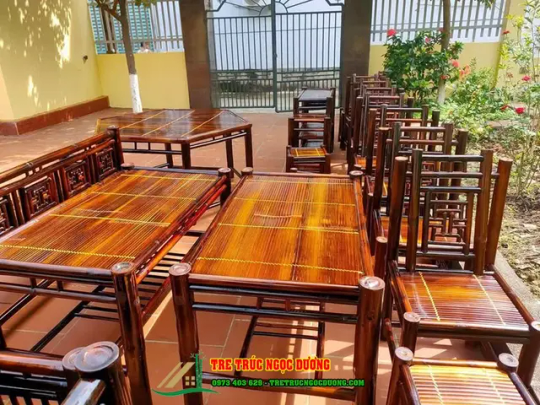


Bố Trí Bàn Ghế Tre Đẹp Cho Quán Cà Phê – Bí Kíp Tối Ưu Không Gian, Tăng Sức Hút Khách Hàng
Bạn có biết rằng cách bố trí bàn ghế quyết định đến 80% trải nghiệm khách hàng khi bước vào quán cà phê? Một không gian chật chội, sắp xếp lộn xộn có thể khiến khách cảm thấy bí bách, còn một bố cục hợp lý với bàn ghế tre đẹp lại mang đến cảm giác thư giãn, thoải mái và đầy sức hút.
0 notes
Text
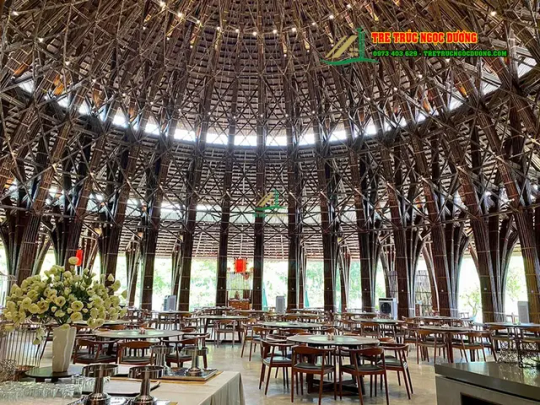
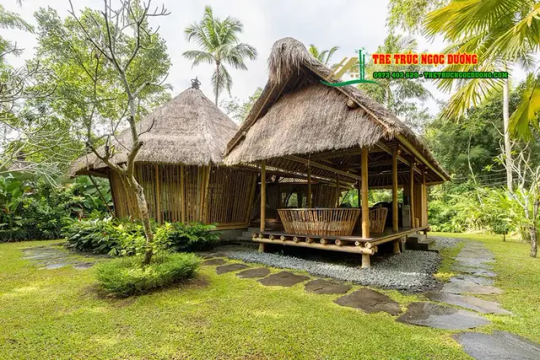
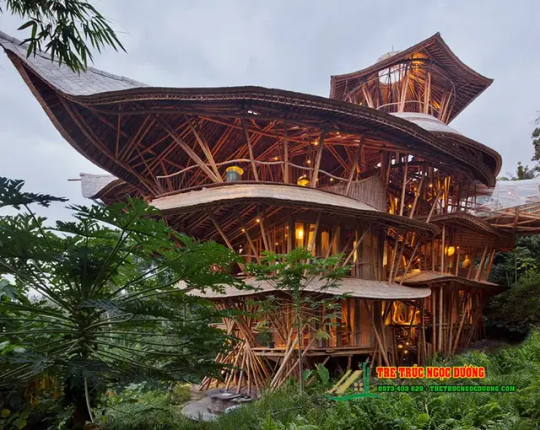
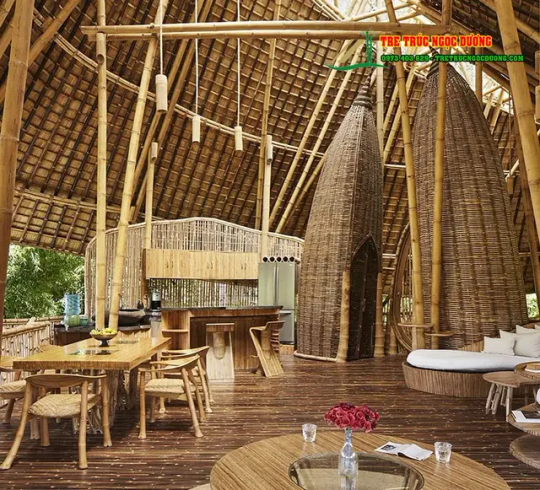
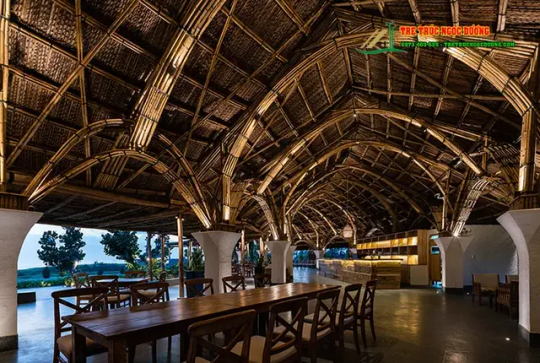
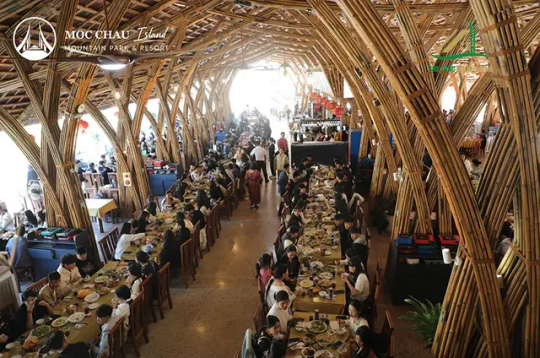
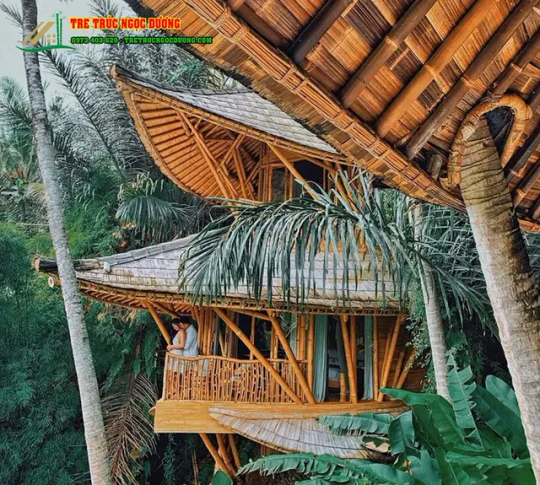
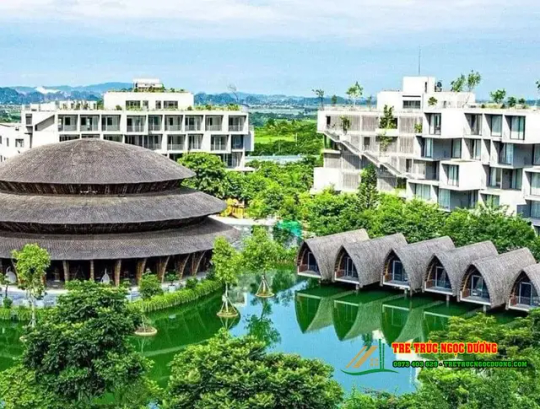
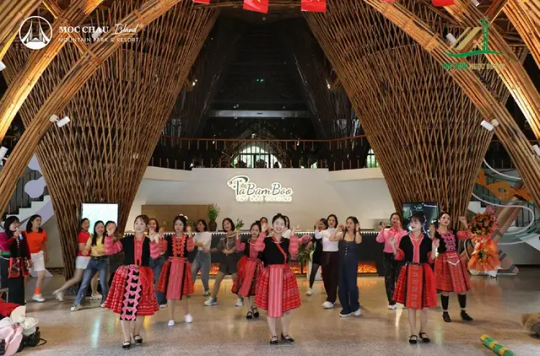
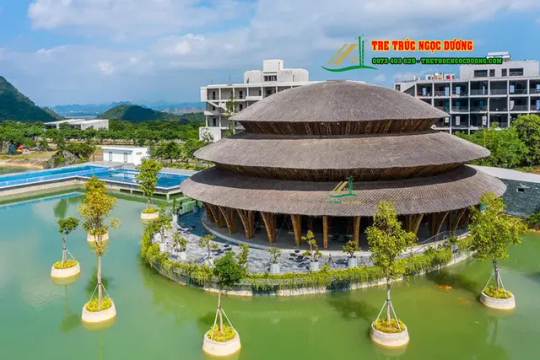
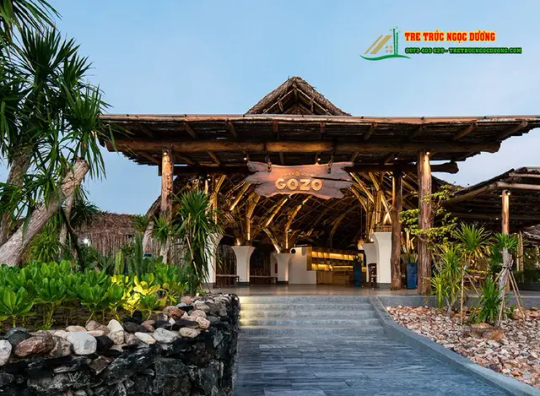
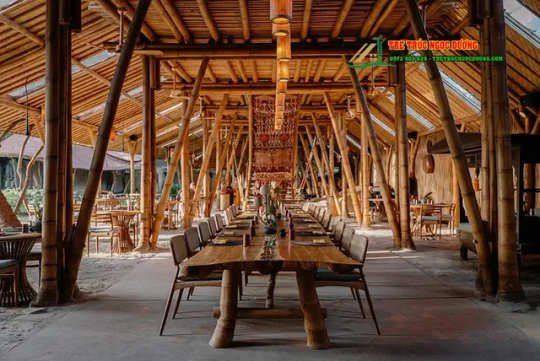


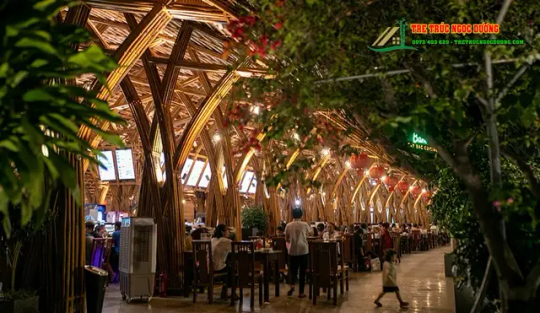
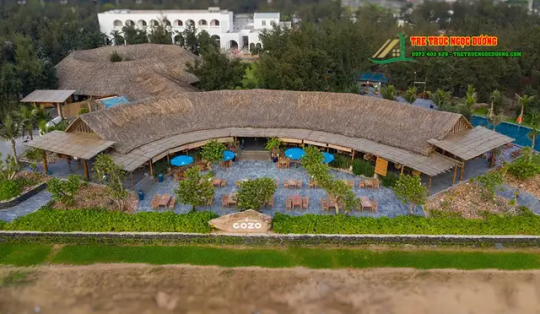

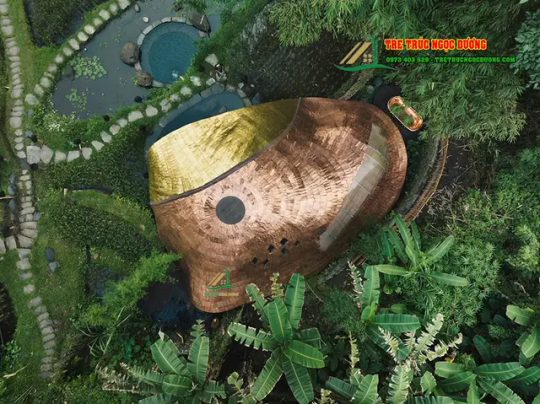
Top 10 Homestay Bằng Tre Đẹp Nhất Đông Nam Á – Tuyệt Tác Kiến Trúc Giữa Lòng Thiên Nhiên
Bạn đã bao giờ tưởng tượng mình thức dậy giữa một khu rừng nhiệt đới, ánh nắng len lỏi qua những tán lá, xung quanh là không gian mộc mạc nhưng đầy mê hoặc của một homestay bằng tre?
Không còn là những bức tường bê tông lạnh lẽo, homestay làm bằng tre mang đến trải nghiệm gần gũi thiên nhiên, kết hợp tinh tế giữa sự sang trọng và sự giản dị thuần khiết. Từ những ngôi làng tre trên mặt nước ở Bali, những ngôi nhà bằng tre ẩn mình trong rừng sâu Thái Lan, đến những khu nghỉ dưỡng bằng tre độc đáo ở Việt Nam, mỗi công trình đều là một tuyệt tác khiến bất kỳ ai cũng phải trầm trồ.
#homestay bằng tre#thiết kế homestay#kiến trúc bằng tre đẹp#nhà tre lớn nhất Việt Nam#tre trúc Ngọc Dương#Ngoc Duong Bamboo
0 notes
Text

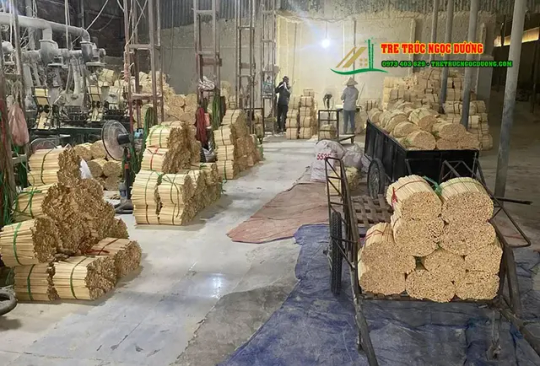
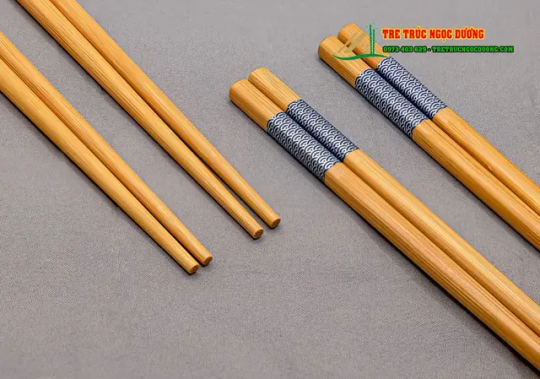

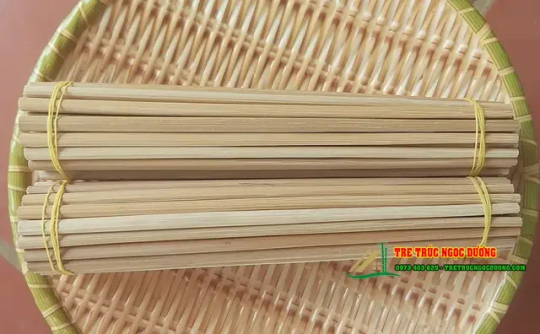

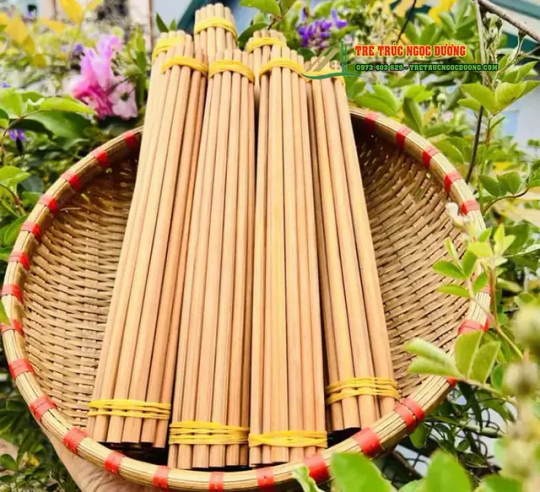
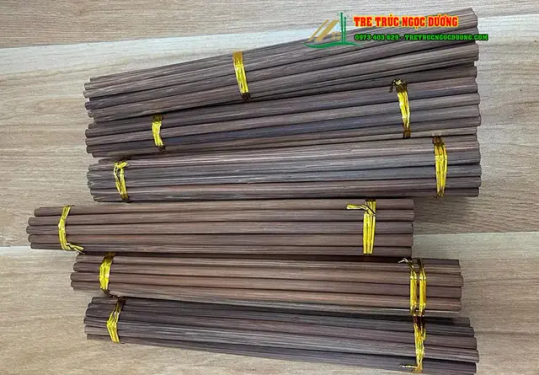


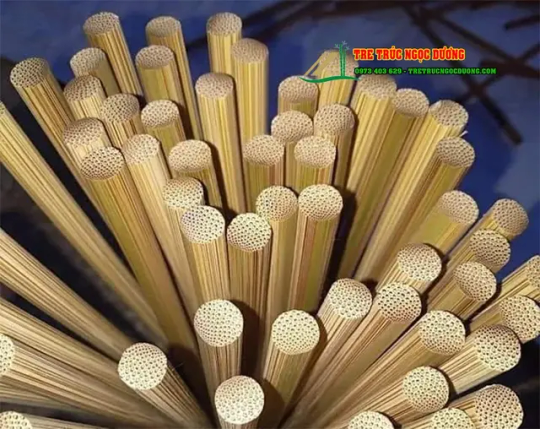
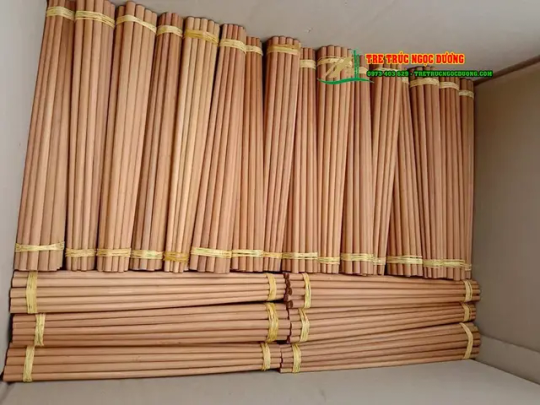
Đũa Tre Có Những Loại Nào? Phân Biệt Đũa Tre Dùng Một Lần Và Đũa Tre Cao Cấp
Bạn có chắc mình đang sử dụng đũa tre an toàn? Đũa tre là vật dụng quen thuộc trong bữa ăn hàng ngày, nhưng không phải ai cũng biết rằng có nhiều loại đũa tre với chất lượng và mục đích sử dụng khác nhau. Bạn đã bao giờ phân vân giữa đũa tre dùng một lần và đũa tre cao cấp? Chúng khác nhau ở điểm nào, loại nào an toàn hơn, và nên chọn loại nào cho gia đình hay nhà hàng của bạn?
#đũa tre#đũa tre dùng một lần#đũa tre dùng 1 lần#làm đũa tre#đũa tre cao cấp#tre trúc ngọc dương#ngoc duong bamboo
0 notes
Text
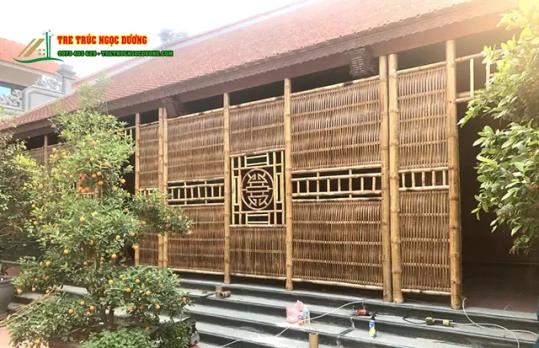
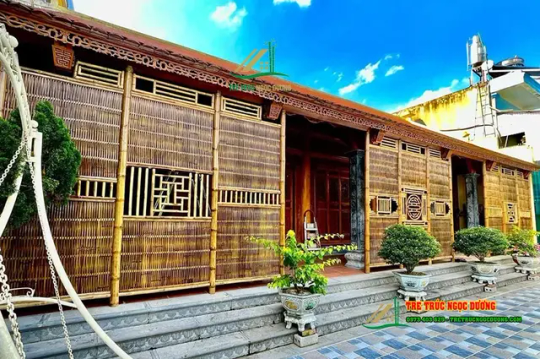
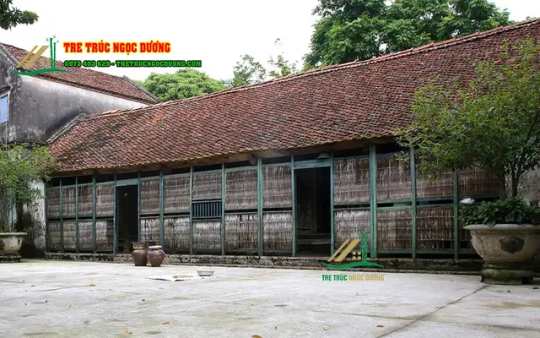

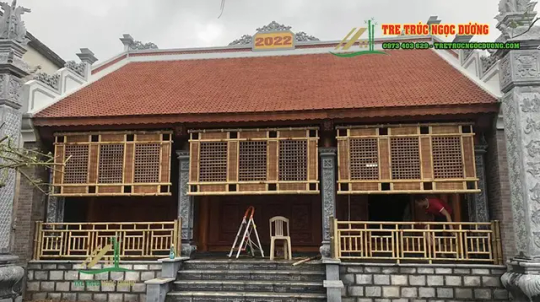
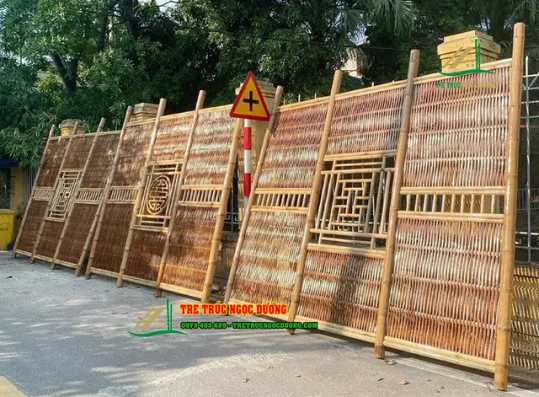
Dại Tre Trong Kiến Trúc Cổ Và Hiện Đại – Giá Trị Vượt Thời Gian
Trong dòng chảy của kiến trúc Việt Nam, có những chi tiết tưởng chừng đơn giản nhưng lại mang giá trị thẩm mỹ và văn hóa sâu sắc. Một trong số đó chính là dại tre – bộ phận không thể thiếu trong những ngôi nhà cổ ba gian, năm gian và cả những công trình tâm linh như đình, chùa miền Bắc. Nhưng liệu dại tre trong kiến trúc chỉ thuộc về kiến trúc truyền thống, hay nó vẫn còn sức sống mãnh liệt trong không gian kiến trúc hiện đại?
#dại tre#dại tre nhà cổ#dại tre trong kiến trúc#thi công dại tre#cánh dại tre#cái giại#tre trúc Ngọc Dương#Ngoc Duong bamboo
0 notes